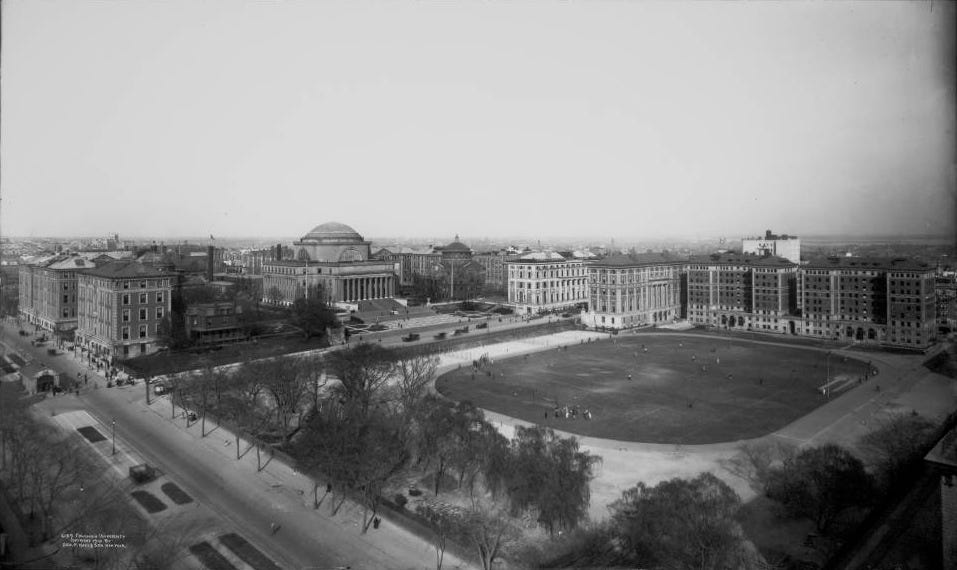This note is a short intervention in our ongoing Symposium on Public Space. I was recently interviewed by the New York Times for a piece about the closure of the Columbia campus since the campus protests over the war in Gaza:
Dhananjay Jagannathan, an assistant professor of philosophy at Columbia, said that he didn’t think that the campus was the appropriate forum for the protests, but having to show an ID to enter feels uncomfortable. “The fact that we have to prove that we really belong is alienating,” he said. “I find it insulting. And I think that’s how the students feel. They feel the regulation of their movement as an intrusion on their dignity.”
I want to expand briefly here on why — perhaps, surprisingly, given my frustration over the campus closure — I think that the university campus was not the most appropriate venue for the anti-war protests, to the extent that they were addressed beyond the university administration (beyond e.g. the issue of divestment).
I wrote about this issue – and its bearing on academic freedom – for The Line of Beauty in late 2023, shortly after the war and the protests began.
In that essay, I argued that it was a mistake to construe academic freedom as a democratic or political right, in other words, as a department of freedom of speech or expression. Rather, academic freedom has to do with the special character of universities and their long-term pursuit of knowledge and truth. Political speech, by contrast, is typically addressed to urgent and short-term questions; it has, therefore, an uncertain place at universities, which are not well-suited to sponsor it.
An unwelcome consequence of the framing of academic freedom as part of a democratic right of expression is that the important distinction between academic speech and extramural or civic speech tends to be effaced. It is true that we do not lose our political rights when we step onto campus, and it may be crucial for universities to commit themselves not to punishing students or faculty for otherwise-authorized political expression and desirable that they permit some forms of political expression on campus. But the demonstrations and rallies on our campus have encouraged an atmosphere where genuine inquiry – and even simply the dissemination of knowledge – has in fact been inhibited. Media coverage of these protests and scrutiny from outside organizations have magnified this problem.
To be clear, I do not support the repressive atmosphere that the quashing of the protests by police action — five months after we published that essay — has brought about. Moreover, in the incipiently authoritarian political circumstances we find ourselves in, it may well be that the norms I favor should be outweighed by the urgency of the moment. Still, we should be clear-sighted about the trade-offs.
In this Symposium, I have written about public space both in its purely spatial dimensions and as a forum for public conversation, that is, as part of a broader public sphere of communication. The public space represented by university campuses is a site of interaction between these two conceptions, a physical manifestation of the ideals of inquiry and dialogue.
Inquiry and dialogue have many functions, however, which are often run together. How do we make sense of the way that academic inquiry can be marshaled for explicitly political goals? How do we hold up the ideals of the university while holding particular universities to account for their actions? These are, perplexingly, both intellectual and practical questions. I’m not sure how to answer them.





